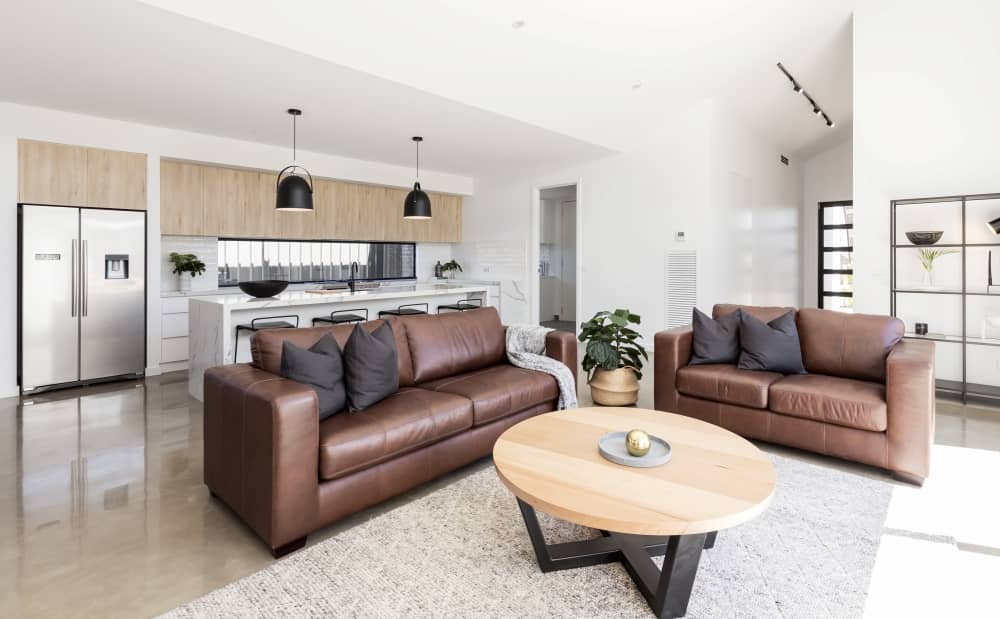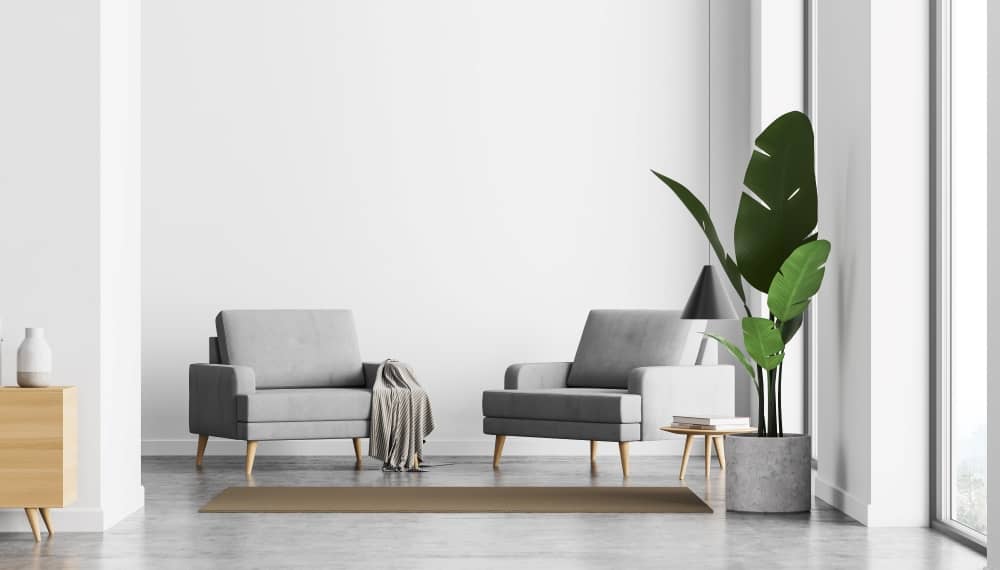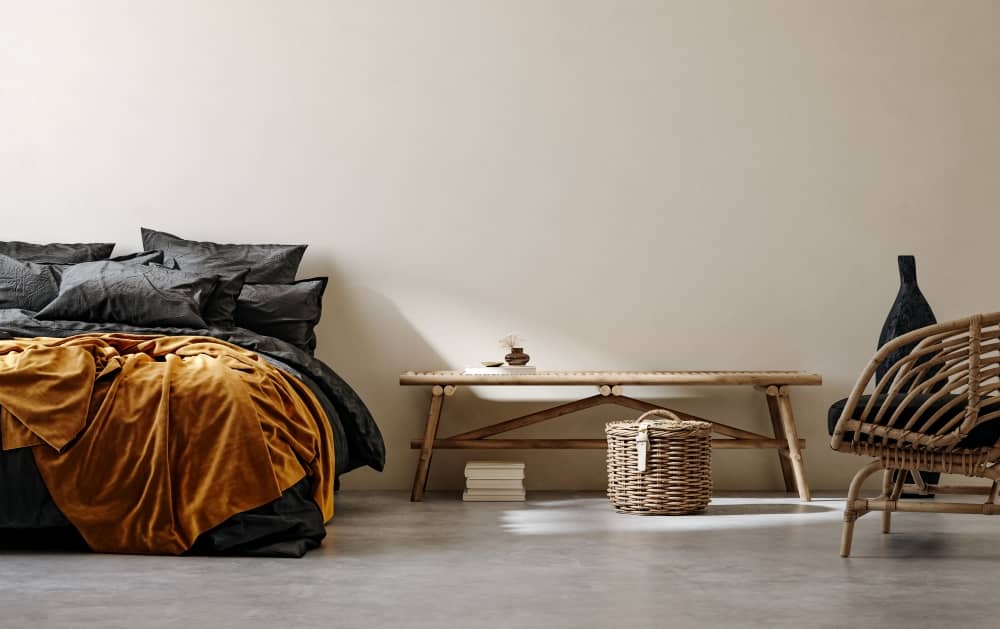Concrete vs Carpet: Which is the Better Choice for Your Home?
- March 17, 2022
- Written By Brad Russell
- Guides
Carpets have always been a staple in many homes, but so is concrete. When choosing between the two, concrete floors seem to be the easy choice. However, some people find concrete to be bland, which is why they go for carpets instead.

Concrete is a practical flooring option, bringing thoughts of patios, pathways, and pool decks to mind. But concrete is not just for outdoor flooring. Much like carpets, concrete can have a place inside your home and not just on the walls.
For centuries, concrete has been a significant part of building and structural projects. But it has come a long way since then. We will compare how concrete fares against the ever-trusted carpet, which is often a mainstay in bedrooms and living rooms.
Are Concrete Floors A Good Idea?
Concrete is easily one of the most commonly used materials in the world – and for many good reasons. Here are some convincing benefits of concrete flooring for your home:
- Safety: Concrete is ideal for people with asthma and allergies because it’s hypoallergenic and repels insects, mould, and mildew. Plus, it’s less slippery and can be applied with a non-slip coating, which is why it is suitable for pool surround. It’s safe for humans, pets, and the environment, as well.
- Durability: Arguably the top perk of concrete floors is their durability. Boost it with a high-quality sealer, and you can have flooring that lasts for years without showing signs of fading and wear and tear.
- Longevity: Concrete floors last for a long time. This material is very hard and durable, so you can count on it to stay functional for several years. That’s why concrete is the choice material in warehouses and industrial spaces since it can withstand heavyweights like trucks, cars, forklifts, and stacked crates.
And on top of the benefits above, cleaning is a breeze. Concrete makes living easier. You spill something on the floor, and that’s OK. You cannot say the same thing with carpets.
How Does Concrete Look?
We’ve talked about the advantages of concrete, but one thing people think it lacks is beauty. Compared to carpets, concrete is often seen as cold and grey and is mainly used in industrial properties.
But things have changed. We now have decorative concrete finishes that let concrete flooring look exactly how you want it to look. That means that you can choose concrete and have it coated with the style that fits your home. It’s completely customisable, thanks to the variety of colours, patterns, and designs available.
You can even have concrete achieve the level of shine that you desire. Polished concrete floors are trendy as they help increase the appeal of any interior. You can opt for a super shiny floor with a mirror-like surface or just the right amount of sheen to keep the flooring classy.
Concrete is the only material for alternative flooring that creates a sleek, rustic, contemporary, or just about any look you want. While carpets have their designs, concrete gives you a choice to pick what the flooring will look like, even imitating wood and marble. You can hardly achieve that with carpets.
What Kind of Concrete is Available?
You have so many options for concrete, much like carpet. However, carpets are merely carpets – quite straightforward. Except for grey concrete, the material involves a more intricate process to create different looks and here are your selections:
- Standard Grey Concrete: The simplest of them all, standard grey concrete is the material that people often conjure in their minds when thinking about concrete itself. It’s the basic form and comes with benefits, including durability and longevity. Seal properly, and you have plenty of years with this type of flooring.
- Exposed Aggregate: For a marble-like finish, exposed aggregate is the answer. It’s one of the top decorative concrete finishes that strip away the unremarkable grey surface to reveal the beauty beneath.
- Polished Concrete: Want a floor that looks like stone tiles? Polished concrete floors will give you what you’re searching for. They have a glossy, shiny appearance, giving the space a softer and more glamorous appeal.
- Burnished Concrete: This type is similar to polished concrete, except it does not have aggregates exposed. Burnishing is a method of concrete finishing to give the surface more durability and a bit of lustre.
- Honed Aggregate: Similar to polished concrete, honed aggregate involves mechanical processing of a concrete surface by cutting and sometimes refining it to achieve the desired finish. The difference between honed aggregate and polished concrete floors is that honed concrete can be processed right after the initial grinding to reveal exposed aggregate. Meanwhile, polished concrete requires more refinement.
- Liquid Limestone: Considered white concrete, liquid limestone is a mixture of cement and limestone. It’s best used in pool decks and surrounds.
- Polished Overlay: Before polishing imperfect floors, they should first be treated with an overlay. A polished overlay is a more economical solution than tearing the floor down and installing a new surface.
- Glowcrete: Do you want your pathway to stand out? Make it glow in the dark with Glowcrete!
These variants can be used in driveways, pool decks, pool surrounds, and pathways. Seek the help of a professional concreter to pick the best type of concrete for your space.
Concrete vs Carpet
If you’re looking for uniqueness, you can count on both concrete and carpet. Both are available in a wide spectrum of designs and colours. However, it’s pretty apparent which has more options. Concrete has no predetermined colour palette, meaning there is no limit to the designs you can choose or come up with. The material is handcrafted and customisable, making your floor exceptional.
Now, when it comes to longevity and performance, the choice is even more evident. There are only a few flooring materials that can match the durability and lifespan of the concrete. Compared to carpets, concrete can easily last for more than 10 years, even with little maintenance. On the other hand, Carpets will eventually require replacement, often in less than 10 years. While concrete is not everlasting, you can quickly replace it or fix the problem, depending on the severity. When it’s time to replace your old carpet, the process is much more difficult due to disposal challenges.
Let’s not forget that carpets are problematic when dealing with humidity and moisture. Spill something, especially red wine and other coloured drinks or foods, will make cleaning a headache. Meanwhile, polished concrete floors will not have this issue, often needing just wiping. Maintenance is simple, as you can tell. That’s why concrete is easily the best choice for residents with allergies.
Carpet flooring is lovely because of its softness and comfort on the feet. But carpets are high-maintenance, needing regular vacuuming and sometimes deep cleaning. They attract dirt, stains, and allergens like mould and pet dander. In contrast, concrete floors are resilient against constant foot traffic and abuse. They are hard, durable, yet smooth with plenty of styles, the ideal flooring solution for busy and practical households.


